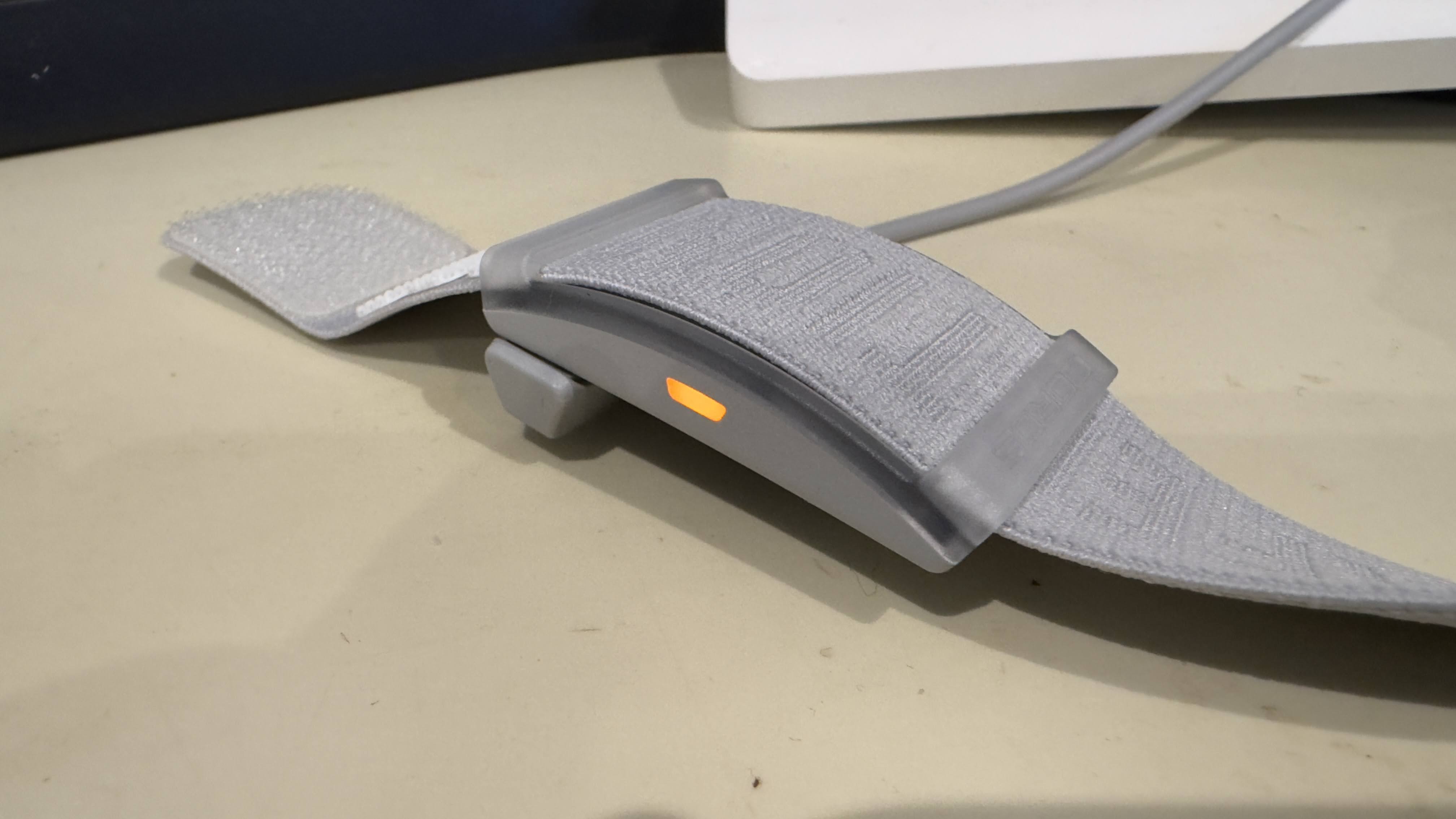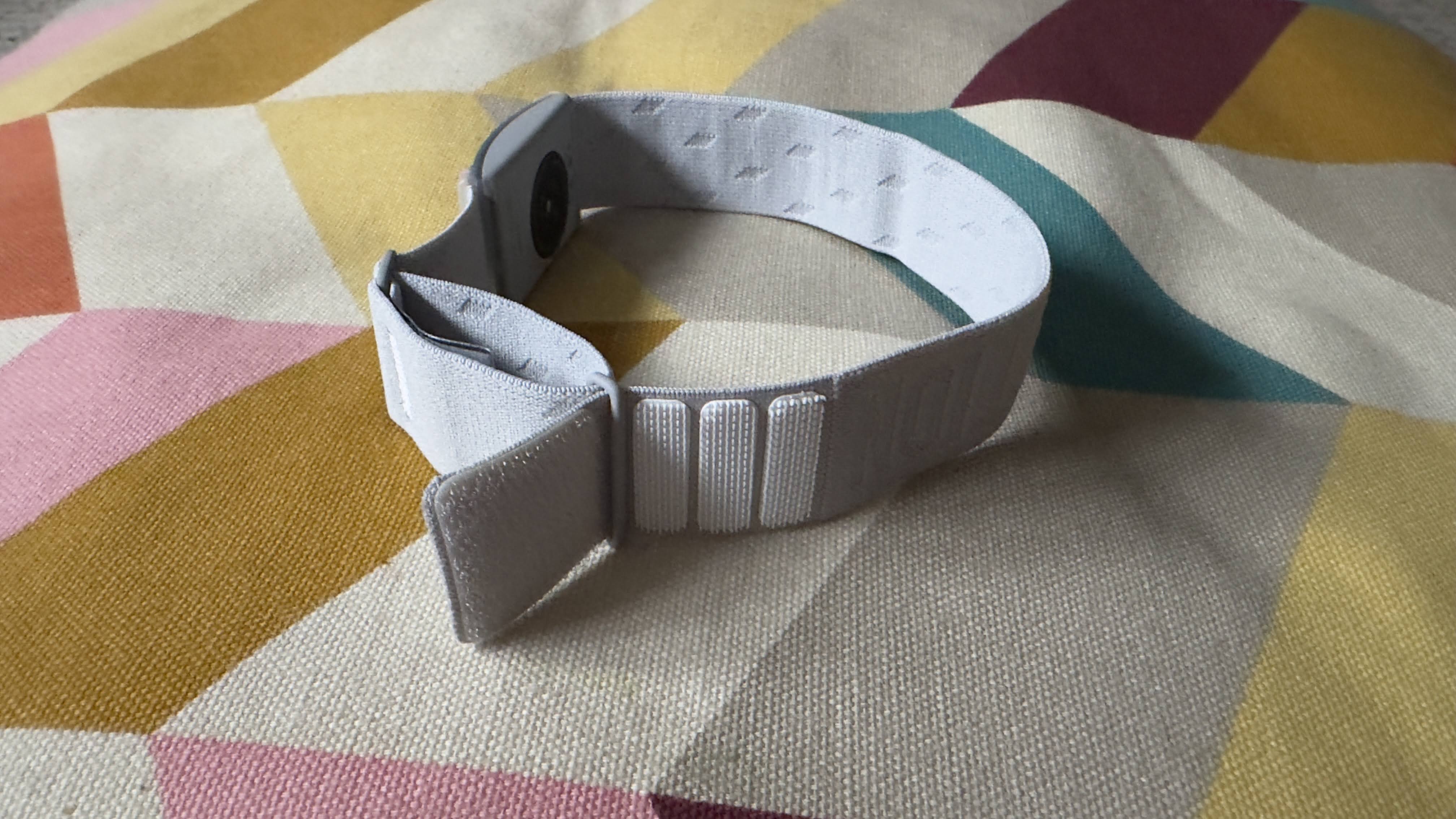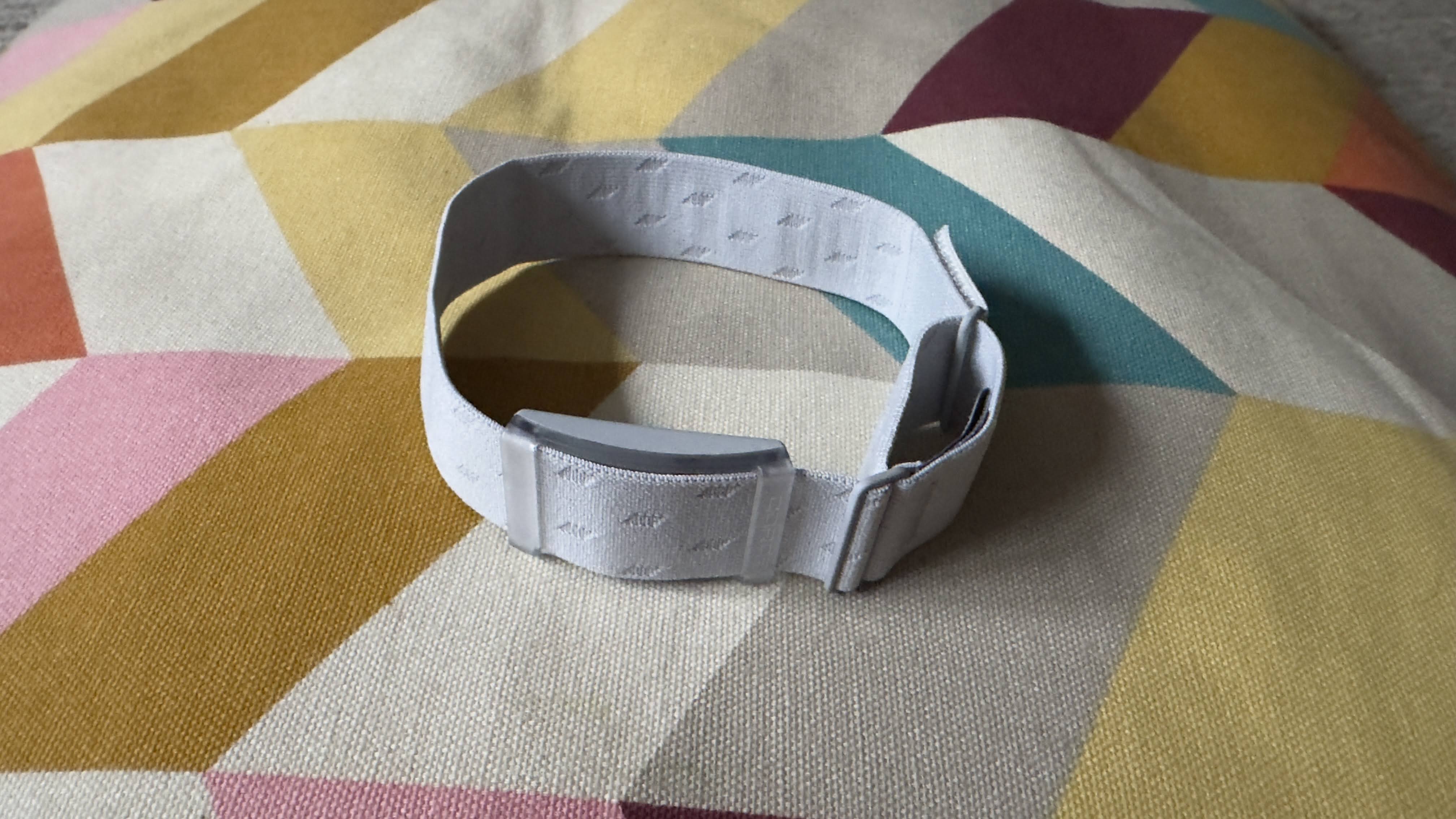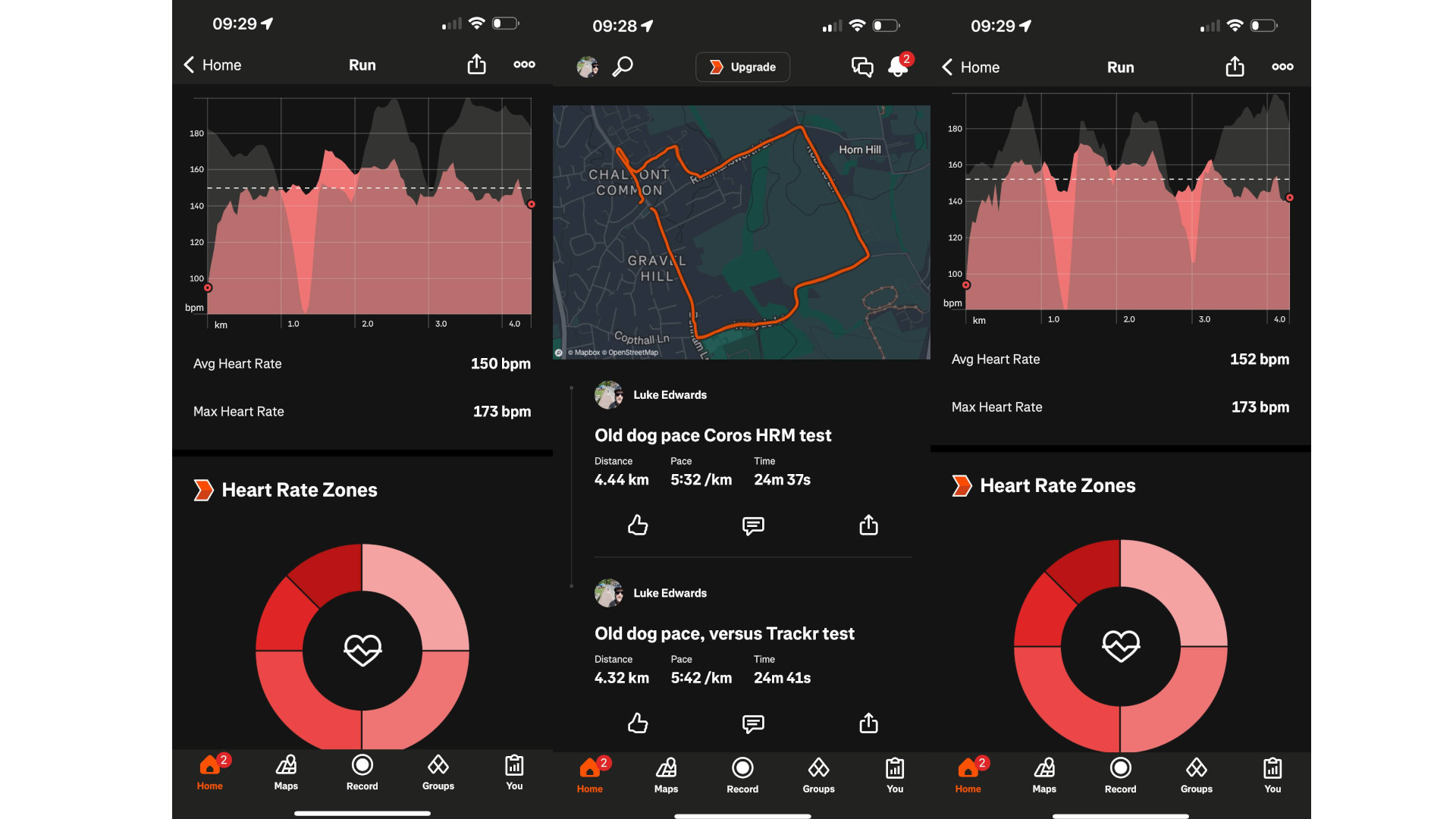Why you can trust TechRadar
We spend hours testing every product or service we review, so you can be sure you’re buying the best. Find out more about how we test.
Coros Heart Rate Monitor: One minute review
The Coros Heart Rate Monitor is a strap-based monitor designed for your upper arm that uses optical tracking tech to measure blood volume, rather than electrocardiograph or ECG, which measures the heart’s electrical signals. While many of the best heart rate monitors use ECG, optical sensors are found in the best smartwatches. Which begs the question: why does Coros’ stand-alone HRM use optical sensors instead of ECG?
The short answer, from Coros, is that optical heart rate monitoring works by using light shone through your skin to see your blood flow. While watches can do a reasonable job on the wrist, there is a lot more blood higher up the arm, making a dedicated strap – which can be affixed tightly yet comfortably to that higher arm position – more accurate.
So, for your money, you are getting a more accurate optical heart rate monitor than a smartwatch, yet with arguably a more comfortable wearing position. Unlike a chest strap, it’s a comfortable wear for both men and women of all body types and sizes, and to top it off you get a decent 38 hours of use with its rechargeable battery.
Thanks to Bluetooth connectivity, this can be used with many different devices from smartwatches and phones to bikes and gym machines. There’s also a useful wear detection feature which means this can auto-power on and connect. All you need to do is put it on.
There is basic waterproofing, to 3ATM, but this is more to make it sweat and rain-proof – so don’t expect this to be usable for swimming. You also won’t find connectivity options like ANT+ here, so that may limit some people in terms of which devices this can be used with.
Component | Coros Heart Rate Monitor |
Dimensions | 42.5 x 28.4 x 9.1mm |
Weight | 19g with strap |
Fit | 18-32cm standard, 24-43cm large |
Case material | Plastic unit, with polyester fibre, nylon and spandex band |
Connectivity | Bluetooth |
Compatibility | 3 simultaneous |
Water resistance | 3 ATM |
Accelerometer | No |
Battery | Rechargeable USB-A |
Coros Heart Rate Monitor: Price and release date
- Available to buy now in the US, UK, and Australia
- Priced at $79 / £69 / AU$140 RRP
- A similar price point as Garmin’s HRM Pro
The Coros Heart Rate Monitor launched on June 27, 2023 and is available across the globe. It launched with a price of $79 in the US, £69 in the UK and $140 in Australia.
The Coros HRM is available in several colours thanks to a selection of band options, which you can pick at purchase. These include Grey, Lime and Orange. There is also an option to get a large version of the Grey if needed – more details on that in the design section.
You can buy the Coros HRM directly from Coros via sites like Amazon.
Price-wise, it’s comparable to the Garmin HRM-Pro, so it’s in line with the rest of its competitors without being either outstanding value or egregiously expensive.

Coros Heart Rate Monitor: Design
- Comfortable to wear
- Easy to fit
- Simple design
The Coros Heart Rate Monitor is all about simplicity and as such this is a doddle to wear. Since this is made to go on your bicep, once you’ve got the right size adjusted to suit you using the velcro fitting, it’s a simple case of sliding it up your arm to pop it on.
The strap materials are a combination of polyester fiber, nylon and spandex, which all equate to a very comfortable feel. But, crucially, this is flexible enough to slip on and off with a stretch, but tight enough to stay in place without it feeling too tight or uncomfortable.
At 19g the total weight is barely noticeable. When you consider people run with large phones in arm strap cases and barely notice them, you can imagine how unobtrusive this feels.
Does this feel more comfy than a chest strap? The answer in my case was a yes, but that may vary from person to person. I certainly like the fact this slips on easily, and thanks to that auto-wear detection sensor it’ll connect up quickly and easily too.
This is made to fit biceps of sizes between 18 and 32cm. So unless you’re very slim or a bodybuilder, this is likely to fit you comfortably regardless of gender. If you are bigger in the arm area then there is the option to go for a larger variant of the strap at point of purchase, which accommodates 24-43cm biceps.

The sensor setup itself comprises five LEDs with four photodetectors. That combination, representing the best optical heart rate sensors from Coros right now, should mean this is fairly future-proof, unlikely to be eclipsed by more accurate technology for a while. That said, it won’t offer SpO2 measurements, so if you’re after O2 features then you may want to keep looking elsewhere.
There is an LED light on the side of the main unit which acts as a useful communication light. When on charge this will glow orange until the battery is full after two hours, and it then turns solid green so you know it’s good to go.
The charger is USB-A at one end and a proprietary magnetic attachment at the end of the HRM connection. While it’s easy to plug into many different power sources, we would have preferred the more efficient, up-to-date USB-C.
The strap is also washable, where the main unit can slide off, making it possible to keep that looking fresh for long periods.

Coros Heart Rate Monitor: Features
- App is minimal
- Lots of third-party app compatibility
- No swim tracking
The Coros Heart Rate Monitor can be paired to many devices and works with the app you want to use. But there is an included Coros app that you can use, ideal if you’ve already got other Coros devices like the Coros Pace Pro.
The Coros app is fine for analyzing data, but it won’t track you while you’re out exercising. So you will need to use a third-party app, like Strava. I connected the HRM by opening the Coros app, and once connected, I could just open Strava, slip on the armband, and it would pull in the HR data directly.
I found this helpful for heart rate training or zone tracking. Generally speaking, I used the phone to collect the data and then only looked at it when analyzing my effort after I was back and showered off, so you’ll need to take your phone in a chest, waist or arm-mounted running case.

It’s also worth noting that if you already have a smartwatch and simply want to add a more accurate heart rate tracker than the built-in optical option, this can connect to your smartwatch too. And yes, this did prove more accurate than wrist-based options during our testing, so this could be a viable alternative to a chest strap.
The app is the only way to know an accurate measure of the HRM’s battery life. Sure the light on the side can give you rough guidance, but that’s not likely to serve you before a run or ride where you’ll want reassurance you have enough juice to go the distance. A push notification would have been helpful when connected too.
It’s worth noting that this can broadcast heart rate to up to three devices simultaneously. So you could have your watch and phone connected to your bike computer at the same time, for example. I haven’t tested this feature yet, but it’s good to have the option should the need arise.

Coros Heart Rate Monitor: Performance
- Good accuracy
- Easy to use
- Very comfortable
One of the most important things to mention here is comfort. This is more comfy to wear than a chest strap, while offering almost the same level of accuracy. It’s easy to slip on and off, less noticeable to wear and can also be kept hidden to avoid knocks – with the option to slide it under your sleeve.
While a wrist-worn heart rate monitor in a watch can be useful, wearing this on your bicep is so much more accurate. As mentioned it’s a better spot, with more blood, for clearer readings. But it’s also higher up the arm with far less movement when running and way less bumping when riding a bike. All that combines to offer great levels of accuracy across sports while staying comfy.
Where this falls down compared to a chest strap is battery life. It’s decent, hitting close to the claimed 38 hours in real-world use, but still doesn’t compare to the one or two year battery power of some chest straps.

In one run (image above), with an early hill climb which I use to beat any chance of averaging explaining accuracy, I did spot some issues. I had a competitor chest strap on in addition to the arm-based Coros HRM connected to my phone. On the hill climb, my heart quickly jumped to 170 and the chest strap kept up. However, the Coros strap lagged behind, reading 155. It did catch up, but was a few seconds behind.
After that, as the distance lengthened and those averages came into play, it got even closer, but I was aware of that initial blip.
So while you can see the early discrepancy, generally both the Coros and chest-mounted HRM show similar readings with near-identical max and average heart rate data. It was certainly noticeably more accurate than a wrist-worn optical heart rate sensor is capable of offering.
Coros HRM: Scorecard
Category | Comment | Score |
Value | In line with competition, making it reasonable. | 3.5/5 |
Design | Very well designed to be comfy, work well, be easy-to-use and accurate. | 4.5/5 |
Features | Great app compatibility but loses points on lack of swim support. | 3/5 |
Performance | Accurate, comfortable and easy to use. | 4/5 |
Total | A superb option for accuracy and comfort with charge support. | 4/5 |

Coros Heart Rate Monitor: Buy it if…
Coros Heart Rate Monitor: don’t buy it if…
Also consider
Component | Wahoo Trackr | Garmin HRM Pro | Coros Heart Rate Monitor |
Dimensions | 615 x 30 x 10 mm | 142 x 30 x 12 mm | 42.5 x 28.4 x 9.1mm |
Weight | 39g with strap | 59g | 19g with strap |
Case material | Plastic | plastic | Plastic, polyester fibre, nylon and spandex |
Connectivity | Bluetooth and ANT+ | ANT+, Bluetooth | Bluetooth |
Operation temperatures | -10, -50°C | -10°C – 50°C | Up to 122°F |
Water resistance | IPX7 | 5ATM (50 meters) | 3 ATM |
Accelerometer | No | Yes | No |
Battery | CR3202 rechargeable | 210mAh | 38 hours |
How I tested
I used the Coros HRM for a few weeks to test. I did this across running and cycling mainly and mixed in longer steady trips out as well as hills and sprints to get a range of results. I compared using a wrist-worn Garmin, a chest strap and, at one point, an optical armband too. I used this with a few different apps to try out how the data could be used, shared and analyzed.







Leave a Comment
Your email address will not be published. Required fields are marked *